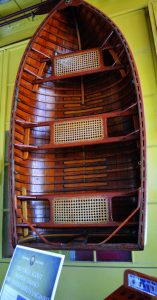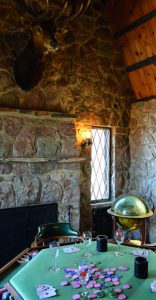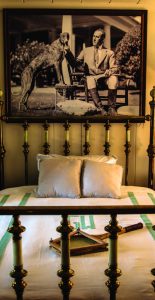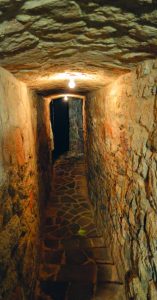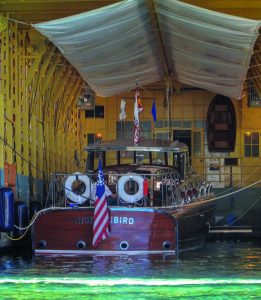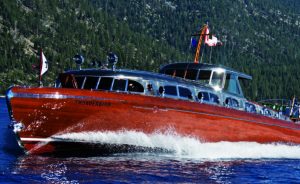Thunderbird Lodge
July – August 2016
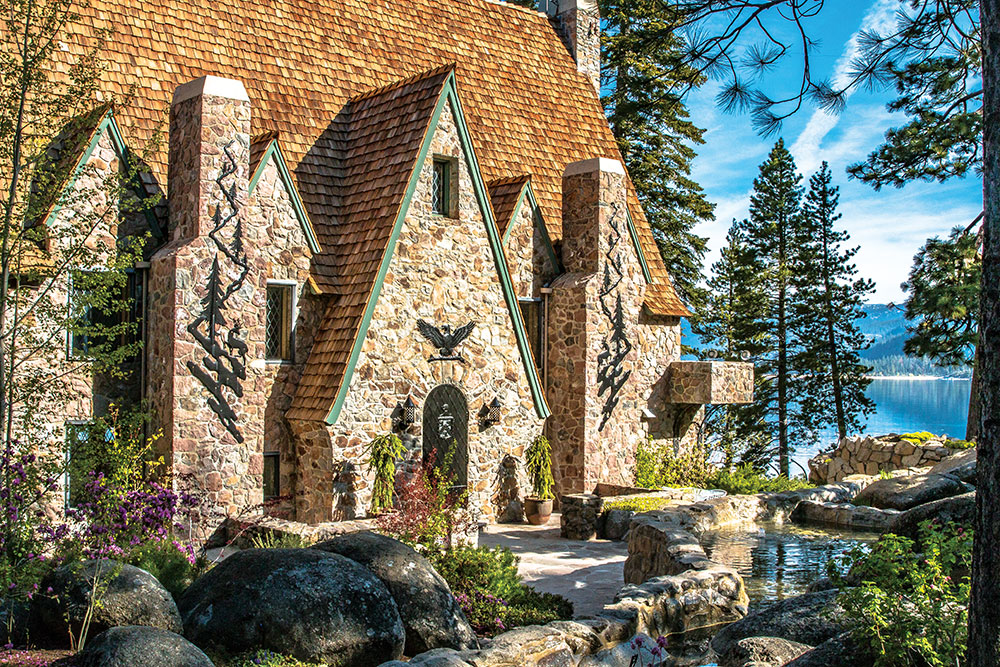
80 years of mystery and magic surround Lake Tahoe’s famed estate.
BY MEGG MUELLER
If the Internet had been around in the 1930s, the legend of George Whittell Jr. would far outshine the scandal-plagued celebrities of today. And while he was himself a raconteur, the adage would still be true; you can’t believe everything you read.
The truth—he was fabulously wealthy, collected exotic animals, and had a penchant for beautiful women that weren’t his wife—is enough for the storybooks, but likely wasn’t salacious enough to sell newspapers in his day, so exaggeration was rampant in the press.
He did, however, have a somewhat-deserved scandalous reputation when he began building his summer home on the shores of east Lake Tahoe in 1936.
MAN BEHIND THE MANSION
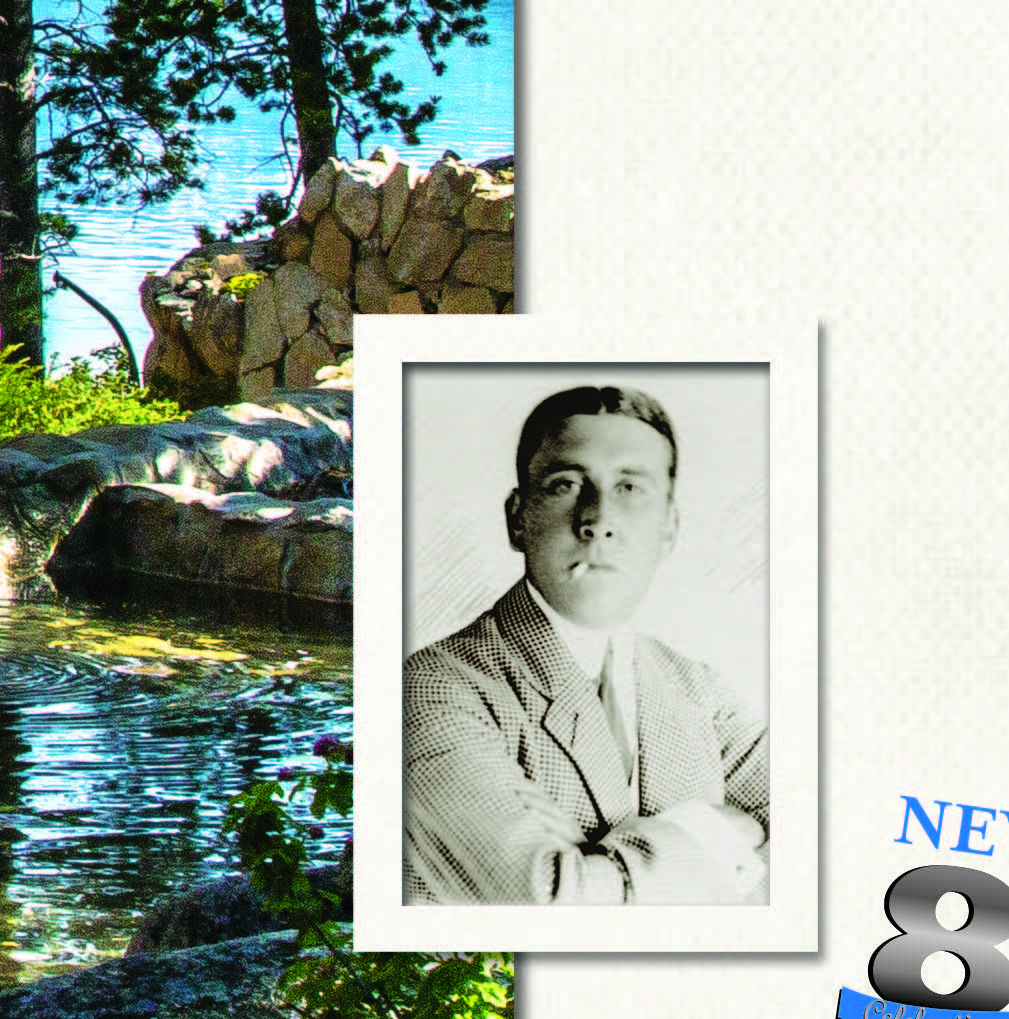 Born in 1881 in San Francisco to a family that made a fortune from Gold Rush-era banking, real estate, and railroads, George loved his money, but not the restrictions of high society. The quintessential rebellious teenager, it’s been said he left home shortly after graduating high school to join the Barnum & Bailey Circus.
Born in 1881 in San Francisco to a family that made a fortune from Gold Rush-era banking, real estate, and railroads, George loved his money, but not the restrictions of high society. The quintessential rebellious teenager, it’s been said he left home shortly after graduating high school to join the Barnum & Bailey Circus.
A foray into big-game hunting in Africa cemented a lifelong love of wild animals, particularly large cats.
In 1903, George’s parents hoped to settle down their wayward son, and arranged a marriage to one of San Francisco’s respected blue bloods. The story goes that George had other plans and instead eloped with a voluptuous showgirl. Further investigation reveals Florence Boyer to be a modest seamstress, but regardless of her profession, she was not suitable to George’s parents. His father quickly had the union annulled with the hopes of avoiding scandal, only to have his son turn around and marry an actress, who left him two years later in divorce.
During World War I, George reportedly drove an ambulance while in Italy and after being injured, met and fell in love with Elia Pascal, a French nurse. He brought Elia back to California, and with her acceptable pedigree the two married in 1919. George’s predilection for beautiful women continued after his marriage, and while Elia traveled to Paris sans George, she lived with him at their Woodside, Calif., home and frequently accompanied him to Thunderbird Lodge.
In 1922, George’s father died, and despite a wild, rambunctious youth, George Jr. proved an adept businessman, growing the family fortune steadily in the ensuing decade. In late 1929, however, George made what may have been his most perfect deal.
THE TRADE OF THE CENTURY
After the stock market crashed in 1929, George presciently made what is arguably his most savvy purchase; he bought acres and acres of pristine Sierra Nevada land—including more than 20 miles of Lake Tahoe shoreline— for just $3 an acre for the offshore land, and $6 an acre for the shoreline. (Tales of the purchase for 6 cents an acre are untrue). At one point he owned more than 40,000 acres of Lake Tahoe property, reaching from Nevada’s north shore to Zephyr Cove.
Initially, his plans for the land included a casino-hotel, luxury homes, and even a ski resort. After he built his summer home, however, the solitude was something he could not give up, and he chose the peace and quiet of no neighbors over the money developing the land would bring.
For 33 years, George reveled in his summer retreat, even bringing his elephant, Mingo, for a visit before the temperatures proved too much for the pachyderm. A more consistent companion was his pet lion, Bill, which was a gift from his ex-wife. Tales of the big cat’s nocturnal wanderings are exaggerated, but it’s safe to say guests at Thunderbird Lodge kept a wary eye out for George’s beloved friend.
Almost as constant were rumors of George’s ribald ways, with stories of parties growing more sensational with every retelling. From orgies in the fountains to locking naughty guests up in the house’s dungeon, the tales of George’s life at Thunderbird Lodge are more about the myth than the man. While he did entertain on occasion and was known for raucous all-night poker games with the likes of Ty Cobb and Howard Hughes, George’s reclusive nature found him often in the company of just a few close friends while in Lake Tahoe. George died in 1969 at the age of 87.
AN UNINTENTIONAL LEGACY
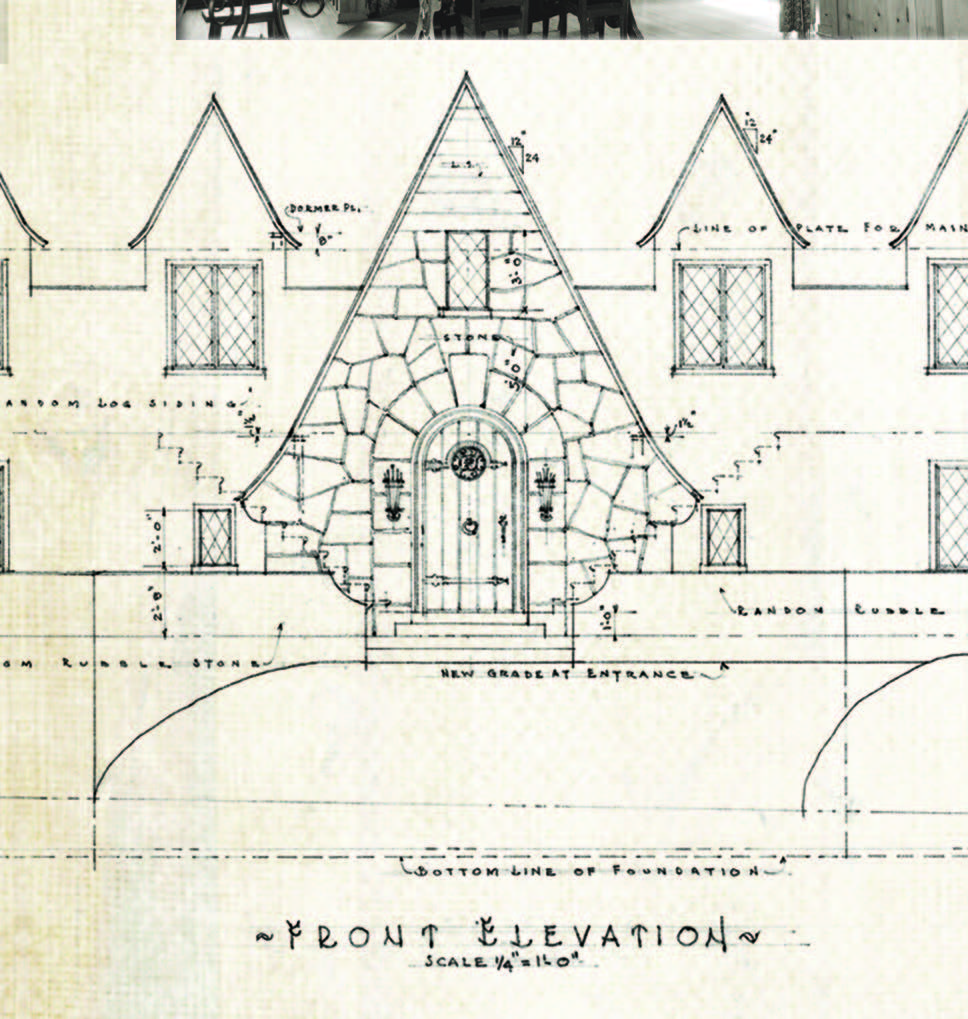 While he never set out to become such, George was perhaps the lake’s greatest conservationist: the Nevada shoreline’s untouched beauty is largely thanks to him. Built from materials found in the area, Thunderbird Lodge is an elegant addition to the natural surroundings and also a shining example of renowned architect Frederic DeLongchamps’ work. In addition to the main house, there is a card house, caretaker’s cottage, the cook/butler’s house, an elephant barn, the admiral’s house, the boathouse with adjoining 600-foot tunnel, and gatehouse.
While he never set out to become such, George was perhaps the lake’s greatest conservationist: the Nevada shoreline’s untouched beauty is largely thanks to him. Built from materials found in the area, Thunderbird Lodge is an elegant addition to the natural surroundings and also a shining example of renowned architect Frederic DeLongchamps’ work. In addition to the main house, there is a card house, caretaker’s cottage, the cook/butler’s house, an elephant barn, the admiral’s house, the boathouse with adjoining 600-foot tunnel, and gatehouse.
Additions were made by subsequent owner Jack Dreyfus, but the property retains its original glory and mystery. In the summer, guided tours by docents offer a glimpse into the life and legacy that is George Whittell Jr. But Thunderbird Lodge is more than meets the eye.
“It’s so much more than just a house or a history of a colorful man,” Bill Watson, chief executive and curator of Thunderbird Lodge, explains. “We’ve become the repository for the Lake Tahoe Basin’s art and history.”
Some 11 years into a job that was supposed to last 90 days, Bill has found himself on the front line of Lake Tahoe’s historical preservation efforts. His original mission was to save the Thunderbird Lodge from being torn down—that was accomplished when a deal was brokered that gave the buildings to the Thunderbird Lodge Preservation Society, while the Forest Service kept the land. Next, the challenge was to sustain the buildings; 10,000 people a year visit Thunderbird Lodge for tours, plus 2,000 schoolchildren. There are special events—some are members-only, but the public is invited to others—that help raise funds for the upkeep of the buildings, but as Bill points out, there’s still work to be done before he can accomplish his third mission: building a permanent preservation fund endowment.
“We are still a historic site at risk,” he says. “Even with just five paid employees, Thunderbird Lodge costs $1 million a year to run. We are totally self contained up here.”
Along with its own water treatment plant and septic system, the operation requires the help of about 100 volunteers to keep the property open for visitors who come to see the buildings, artifacts, and discover the history of the man, house, and area.
Like George, Bill has found himself in a conservationist role he didn’t anticipate. He oversees Lake Tahoe’s de facto art and history museum, housing more than 25,000 art objects, papers, and artifacts from the region’s past. He has story after story of people calling him offering entire collections because they have nowhere else to donate them. He always says yes, and one day, he hopes to make the entire collection available online to the public (see sidebar on page 62).
Art, history, exotic pets, incredible architecture and land, plus the story of one of Nevada’s most influential men come together under one roof, and the Thunderbird Lodge is still teeming with adventure at 80 years old.
“Thunderbird is a wonderful escape, offering windows to the past and to George’s legacy,” Bill says.
The Mighty Thunderbird Yacht
One of George Whittell’s Jr.’s most spectacular toys—among his Duesenberg cars, Grumman Goose seaplane, and a DC-2 airplane— was the 55-foot speedboat he commissioned in 1940 specifically to use at Lake Tahoe.
Thunderbird cost $87,000 to build and is a gleaming wooden vessel, with a hull and cockpit designed to mimic those of George’s DC-2. It originally had twin V-12, 550 horsepower Kermath engines, but when casino mogul Bill Harrah bought it in 1962, he replaced them with twin V-12 Allison aircraft engines.
The beautiful boat ferried the glitterati around Lake Tahoe’s waters, during George’s ownership and Bill Harrah’s time. From casino showgirls to the likes of Tony Bennett, Frank Sinatra, and Liza Minnelli, the Thunderbird was a well-known sight on the lake.
The upkeep of the 75-year-old boat is considerable, and while it spends much of its time protected in the Thunderbird’s massive boathouse, it is available to charter for private events.
FINDING HISTORY THE PROPER HOME
BY BILL WATSON
Thunderbird Lodge may seem like just another beautiful estate on a stunning lake, but our vision—and our future—is much greater. We realize how important it will be to have preserved Nevada’s treasures like Thunderbird Lodge and Thunderbird yacht for future generations. More than just a local legacy, Thunderbird is becoming a global model for such preservation endeavours.
We are the keepers of Lake Tahoe’s rich heritage—protecting and sharing for future historians and forward-thinking leaders.
We hope they will recognize the universal potential in inspiring curiosity, appreciation, understanding, and stewardship of Lake Tahoe’s art, history, and environment.
Lake Tahoe’s cultural narrative intersects at Thunderbird Lodge: geologic, Native American, mining, lumbering, railroading, rusticating, recreating, early conservation efforts, and more. Sadly, there is no viable institution today with the capacity to assemble and interpret this colourful past. With its vast collections of material and archives, Thunderbird is best positioned to share Lake Tahoe’s story as its de facto art and history museum.
Through Thunderbird’s Flagship and Castle Club membership programs, preservation-minded families and business are sponsoring development of one of the nation’s first digital museums, where Thunderbird will make available online its entire Lake Tahoe collection, plus other compelling content to researchers and audiences worldwide.


